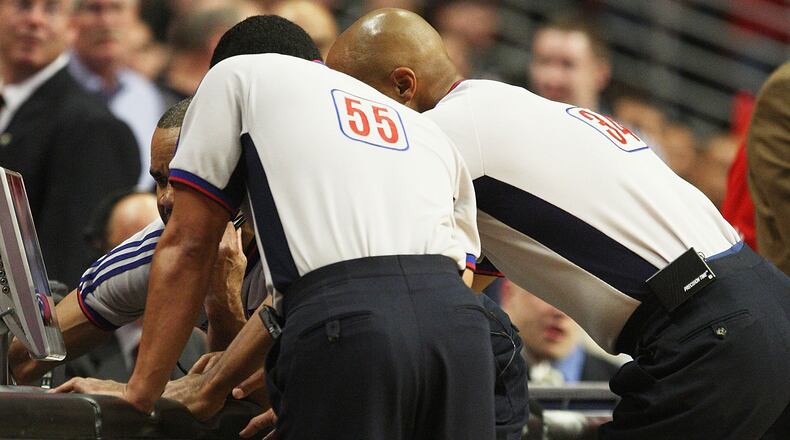The Saints got jobbed by a no-call on pass interference in the last NFC Championship game. This prompted NFL owners to adopt a rule allowing pass-interference calls and no-calls to be subject to coaches’ challenges and replay booth reviews. Now the subjective judgment of booth officials can supersede the subjective judgment of field officials while games come to a halt and everyone scrutinizes 30 angles of the same play frame-by-frame.
The NBA has decided it wants in on that riveting inaction. The league announced it will allow coaches to challenge calls next season in four instances, including personal fouls called against their team. (Thankfully, non-calls can’t be challenged.) In a twist, those subjective judgment calls won’t be reviewed by officials in the NBA Replay Center, but by the game officials. So referees will go to the monitor to make a subjective judgment of the judgment call that one of them just made.
NBA coaches will get one challenge per game and must have a timeout left to use it. Three other calls are subject to challenge: out-of-bounds violations, goaltending and basket interference. At least those calls are based on clearly defined rules that can easily be adjudicated.
Fouls, on the other hand, are confusingly defined in several areas of the rulebook and often are in the eye of the whistle-holder. For one example, turn to Rule No. 12 B, Section III regarding personal fouls by a player setting a screen:
A player who sets a screen shall not (1) assume a position nearer than a normal step from an opponent, if that opponent is stationary and unaware of the screener's position, or make illegal contact with an opponent when he assumes a position at the side or front of an opponent, or (3) assume a position so near to a moving opponent that he is not given an opportunity to avoid contact before making illegal contact, or (4) move laterally or toward an opponent being screened, after having assumed a legal position. The screener may move in the same direction and path of the opponent being screened.
In (3) above, the speed of the opponent being screened will determine what the screener's stationary position may be. This position will vary and may be one to two normal steps or strides from his opponent.
What is a “normal step?” How does a game official determine whether the opponent is “unaware of the screener’s position?” How does a referee decide if an opponent is “given an opportunity to avoid contact?”
If the “speed of the opponent being screened” is a factor does that mean bigger, slower defenders are allowed less space than smaller, faster ones? If the legal screening position “will vary” then doesn’t that mean these definitions are arbitrary and really just come down to the judgment of the official?
Now, when a coach doesn’t like an illegal screen called against his player, he can call timeout and challenge it. This will send officials scurrying to the monitor to look at a replay. Will a “normal step” and “speed of the opponent” look different in slow motion? If the definition of a legal screening position varies, anyway, then what’s the point of checking it twice?
Proponents for replay reviews in sports usually say it’s worth it to stop games to “get it right.” That’s a reasonable view when “right” is clear and easily assessed. It can be easy to see if the running back fumbled before his knee touched the ground, who was the last guy to touch the basketball before it went out of bounds and whether the runner reached the bag before the ball was in the first baseman’s glove.
But some calls come down to referee’s individual interpretation of rules that no one has ever been able to clearly define. Often that’s the case for pass interference in football and personal fouls in basketball. The NFL and NBA can have their coaches challenge calls and send their officials to monitors as often as they like but, at some point, judgement calls must be allowed to stand so we can get on with the games.
About the Author
The Latest
Featured

